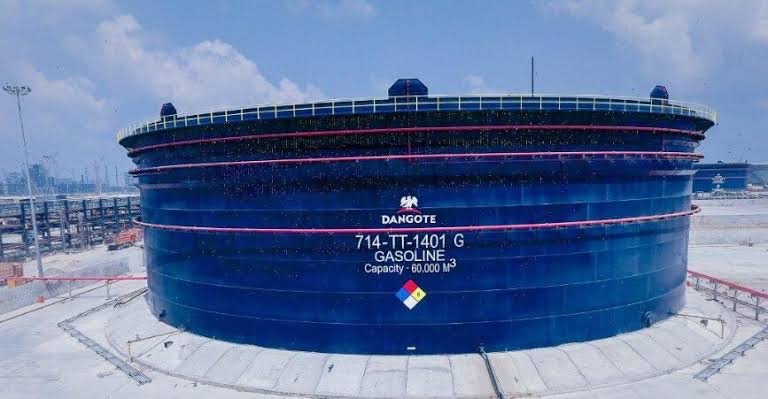KEY POINTS
- Dangote Refinery sourced Ghana’s Sankofa crude for the first time as output hit 610,000 bpd.
- The plant is edging toward its 650,000 bpd capacity while juggling Nigerian, U.S., and African feedstock.
- Despite pledges to prioritize Nigerian crude, diversification reflects both supply challenges and operational pragmatism.
Nigeria’s $20 billion Dangote Petroleum Refinery is expanding its crude basket to include Ghana for the first time, a move that signals a more pragmatic approach to sourcing as Africa’s largest refining complex pushes past 70% operating capacity.
The decision underscores the refinery’s determination to stabilize output amid persistent speculation about its technical resilience and its long-term ability to rely on Nigerian crude alone.
According to data from market tracker Kpler, the refinery’s August receipts included five Nigerian Suezmaxes, two U.S. Very Large Crude Carriers, and a Ghanaian cargo of Sankofa grade — a medium-sweet crude prized for its relatively low sulfur content. That intake helped push production to around 610,000 barrels per day, edging closer to its nameplate capacity of 650,000 barrels.
“By incorporating Ghanaian crude, Dangote is broadening its operational flexibility at a critical stage in its ramp-up,” said one Lagos-based energy consultant. “It’s less about abandoning Nigeria and more about ensuring the plant doesn’t stall as contracts and logistics catch up.”
Balancing Nigerian commitments with global supply deals
Since coming onstream, the refinery has sourced barrels from a patchwork of suppliers including Nigeria, Angola, Brazil, and Equatorial Guinea, with U.S. light sweet crude overtaking Nigerian supply in July. This diversification has fueled questions over whether Dangote can fulfill its pledge to prioritize local crude and help end Nigeria’s reliance on imported fuel.
In June, a Dangote Industries executive told Bloomberg the company intended to transition to “100% Nigerian supply” before year-end. Yet the latest sourcing shift shows the refinery walking a fine line — maintaining assurances to policymakers in Abuja while securing dependable flows from outside the country.
Industry observers note that the refinery’s throughput has steadily climbed from about 60% of capacity in the first quarter to 70% in August. Benedict George, editor of Argus’s European Products Report, said last month the facility had already “outpaced expectations for 2025” in both crude receipts and run rates.
Still, doubts linger. Some analysts argue that Nigeria’s production shortfalls, combined with fluctuating market dynamics, make exclusive reliance on domestic crude an unrealistic ambition in the near term.



